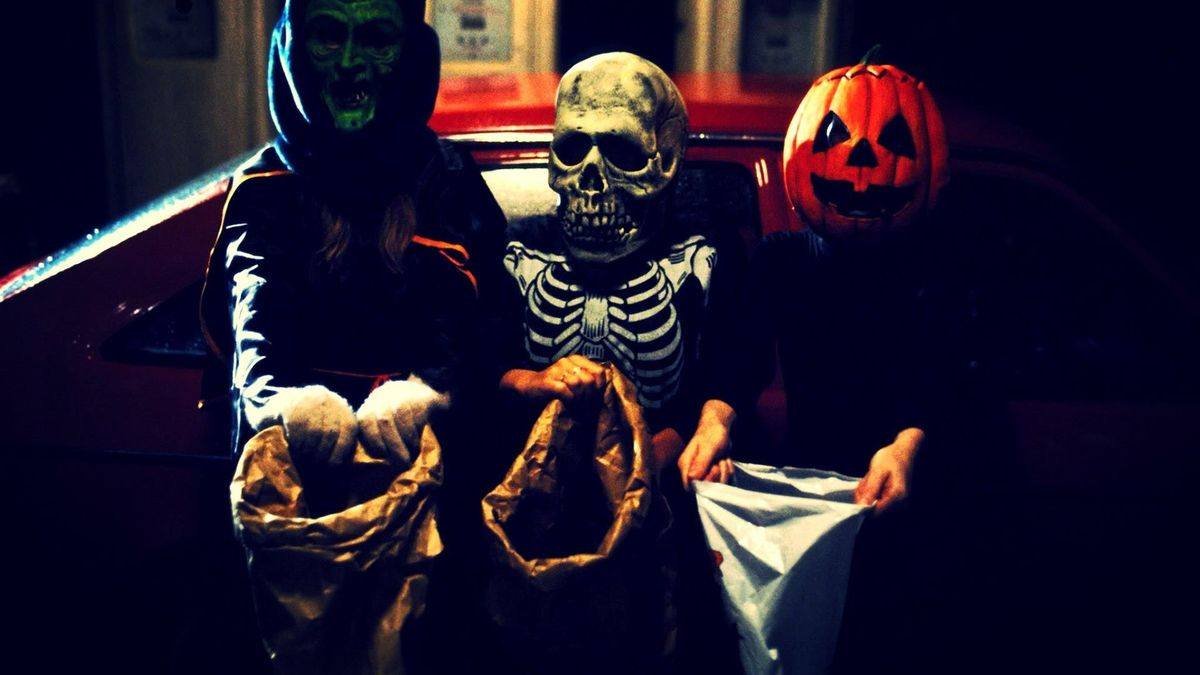Halloween III: Season of the Witch (1982)

Halloween III: Season of the Witch, released in 1982, stands as a unique entry in the storied Halloween franchise, diverging significantly from its predecessors. Directed by Tommy Lee Wallace, this film represents the first—and only—sequel in the series to deviate from the established narrative of Michael Myers, the franchise’s iconic antagonist. Instead, Halloween III ventures into the realm of science fiction and supernatural horror, presenting a standalone story that explores themes of technology, consumerism, and ancient rituals.
The film’s departure from the Michael Myers storyline was a deliberate decision by producers John Carpenter and Debra Hill, who envisioned the Halloween series as an anthology of standalone horror tales. This vision was intended to make each film distinct, with a new story for each installment. Halloween III: Season of the Witch was meant to be a fresh narrative that could stand on its own, independent of the slasher elements that had characterized the first two films.
At the heart of Halloween III is the eerie and unsettling tale centered around the Silver Shamrock Novelties company, which manufactures Halloween masks that hold a sinister secret. The plot unfolds as Dr. Daniel Challis, portrayed by Tom Atkins, investigates the mysterious death of a patient and discovers a chilling conspiracy. The patient’s death leads Challis to a small town in California, where he uncovers the horrifying truth behind the Silver Shamrock masks and their connection to an ancient Celtic ritual.
The film is notable for its exploration of themes beyond mere horror. It critiques the commercialization of Halloween and the ways in which technology can be manipulated for malevolent purposes. The masks, which are supposed to bring joy to children, instead serve as instruments for a macabre plan involving a sacrificial ritual. This theme reflects broader anxieties about consumer culture and the potential for technology to be used in nefarious ways.

Tommy Lee Wallace’s direction is crucial in establishing the film’s atmosphere. He crafts a sense of unease and dread through a combination of unsettling visuals and a haunting musical score by John Carpenter and Alan Howarth. The film’s score, with its memorable and ominous theme, significantly contributes to the overall sense of horror and contributes to the film’s status as a cult classic.
The film also benefits from a strong performance by Tom Atkins, whose portrayal of Dr. Challis adds depth to the narrative. Challis is an everyman character drawn into a nightmarish scenario, and Atkins’ portrayal effectively conveys both the character’s vulnerability and determination. The supporting cast, including Stacey Nelkin as Ellie Grimbridge, further enhances the film’s unsettling atmosphere.

Despite its unique approach and thematic depth, Halloween III: Season of the Witch was met with mixed reactions upon its release. Many fans of the franchise were disappointed by the lack of Michael Myers and the departure from the slasher genre. However, over time, the film has gained a devoted following and is appreciated for its originality and willingness to break from convention.
In retrospect, Halloween III serves as a fascinating case study in the evolution of horror cinema. It exemplifies the risks and rewards of experimenting with established franchises and highlights the potential for genre films to explore complex themes and narratives. Its legacy endures as a testament to the creative ambitions of its filmmakers and the lasting impact of its distinctive story and chilling atmosphere.

In conclusion, Halloween III: Season of the Witch remains a bold and unconventional entry in the Halloween franchise. Its exploration of technological horror, consumerism, and ancient rituals sets it apart from traditional slasher films and underscores the importance of innovation within the horror genre. Though it diverged from the formula of its predecessors, the film’s unique approach has earned it a lasting place in the annals of horror cinema.











